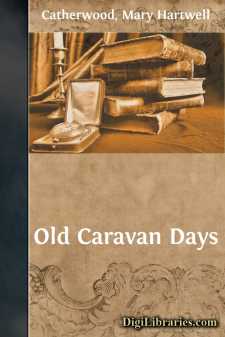Categories
- Antiques & Collectibles 13
- Architecture 36
- Art 48
- Bibles 22
- Biography & Autobiography 813
- Body, Mind & Spirit 142
- Business & Economics 28
- Children's Books 17
- Children's Fiction 14
- Computers 4
- Cooking 94
- Crafts & Hobbies 4
- Drama 346
- Education 46
- Family & Relationships 57
- Fiction 11829
- Games 19
- Gardening 17
- Health & Fitness 34
- History 1377
- House & Home 1
- Humor 147
- Juvenile Fiction 1873
- Juvenile Nonfiction 202
- Language Arts & Disciplines 88
- Law 16
- Literary Collections 686
- Literary Criticism 179
- Mathematics 13
- Medical 41
- Music 40
- Nature 179
- Non-Classifiable 1768
- Performing Arts 7
- Periodicals 1453
- Philosophy 64
- Photography 2
- Poetry 896
- Political Science 203
- Psychology 42
- Reference 154
- Religion 513
- Science 126
- Self-Help 84
- Social Science 81
- Sports & Recreation 34
- Study Aids 3
- Technology & Engineering 59
- Transportation 23
- Travel 463
- True Crime 29
The Black Feather From "Mackinac And Lake Stories", 1899
Categories:
Description:
Excerpt
Over a hundred voyageurs were sorting furs in the American Fur Company's yard, under the supervision of the clerks. And though it was hard labor, lasting from five in the morning until sunset, they thought lightly of it as fatigue duty after their eleven months of toil and privation in the wilderness. Fort Mackinac was glittering white on the heights above them, and half-way up a paved ascent leading to the sally-port sauntered 'Tite Laboise. All the voyageurs saw her; and strict as was the discipline of the yard, they directly expected trouble.
The packing, however, went on with vigor. Every beaver, marten, mink, musk-rat, raccoon, lynx, wild-cat, fox, wolverine, otter, badger, or other skin had to be beaten, graded, counted, tallied in the company's book, put into press, and marked for shipment to John Jacob Astor in New York. As there were twelve grades of sable, and eight even of deer, the grading, which fell to the clerks, was no light task. Heads of brigades that had brought these furs from the wilderness stood by to challenge any mistake in the count. It was the height of the fur season, and Mackinac Island was the front of the world to the two or three thousand men gathered in for its brief summer.
Axe strokes reverberated from Bois Blanc, on the opposite side of the strait, and passed echoes from island to island to the shutting down of the horizon. Choppers detailed to cut wood were getting boatloads ready for the leachers, who had hulled corn to prepare for winter rations. One pint of lyed corn with from two to four ounces of tallow was the daily allowance of a voyageur, and the endurance which this food gave him passes belief.
Étienne St. Martin grumbled at it when he came fresh from Canada and pork eating. "Mange'-du-lard," his companions called him, especially Charle' Charette, who was the giant and the wearer of the black feather in his brigade of a dozen boats. Huge and innocent primitive man was Charle' Charette. He could sleep under snow-drifts like a baby, carry double packs of furs, pull oars all day without tiring, and dance all night after hardships which caused some men to desire to lie down and die. The summer before, at nineteen years of age, this light-haired, light-hearted voyageur had been married to 'Tite Laboise. Their wedding festivities lasted the whole month of the Mackinac season. His was the Wabash and Illinois River outfit, almost the last to leave the island; for the Lake Superior, Upper and Lower Mississippi, Lake of the Woods, and other outfits were obliged to seek Indian hunting-grounds at the earliest breath of autumn.
When the Illinois brigade returned, his wife, who had stood weeping in the cheering crowd while his companions made islands ring with the boat-song at departure, refused to see him. He went to the house of her aunt Laboise, where she lived. Mademoiselle Laboise, her half-breed cousin, met him. This educated young lady, daughter of a French father and Chippewa mother, was dignified as a nun in her dress of blue broadcloth embroidered with porcupine quills. She was always called Mademoiselle Laboise, while the French girl was called merely 'Tite. Because 'Tite was married, no one considered her name changed to Madame Charette. To her husband himself she was 'Tite Laboise, the most aggravating, delicious, unaccountable creature in the Northwest.
"She says she will not see you, Charle'," said Mademoiselle Laboise, color like sunset vermilion showing in the delicate aboriginal face.
"What have I done?" gasped the voyageur.
Mademoiselle lifted French shoulders with her father's gesture....












